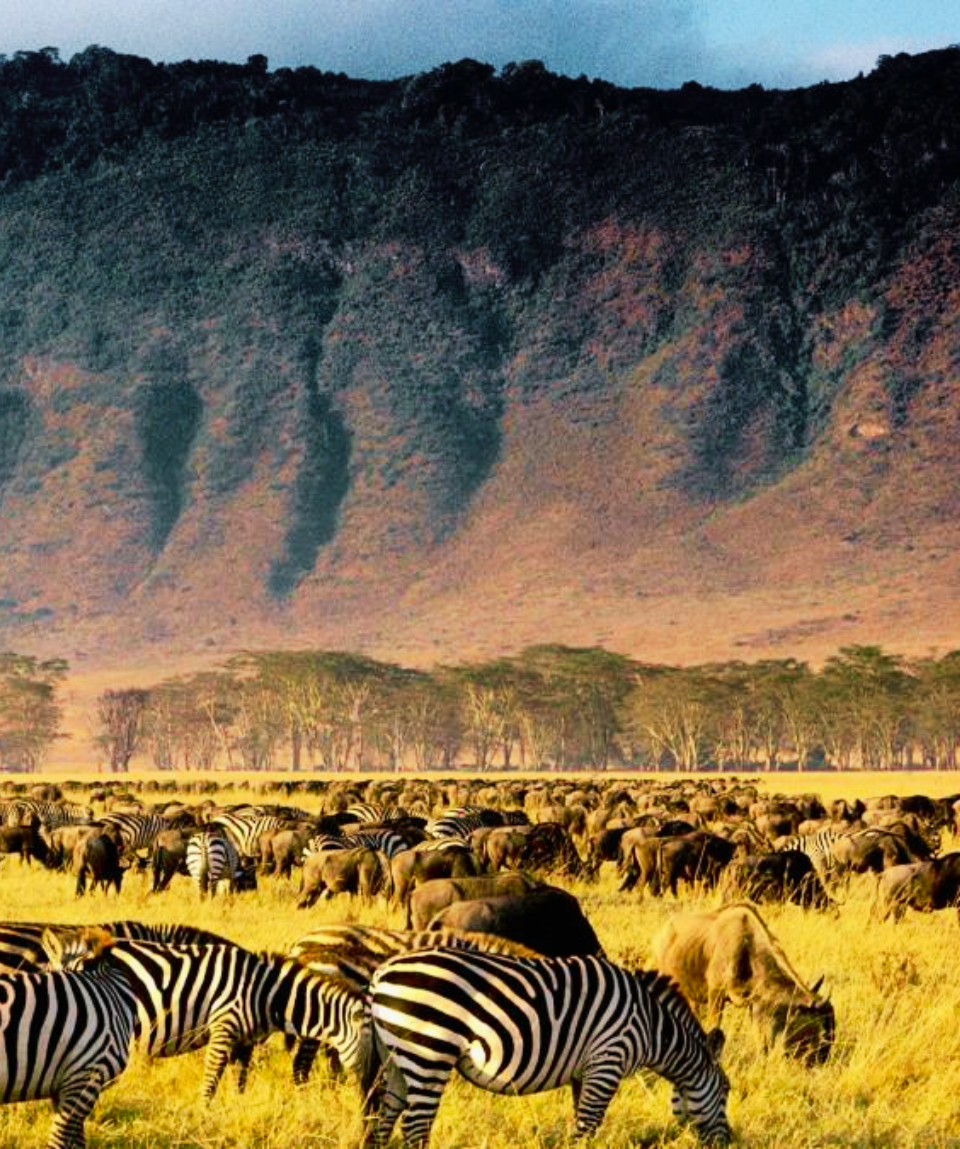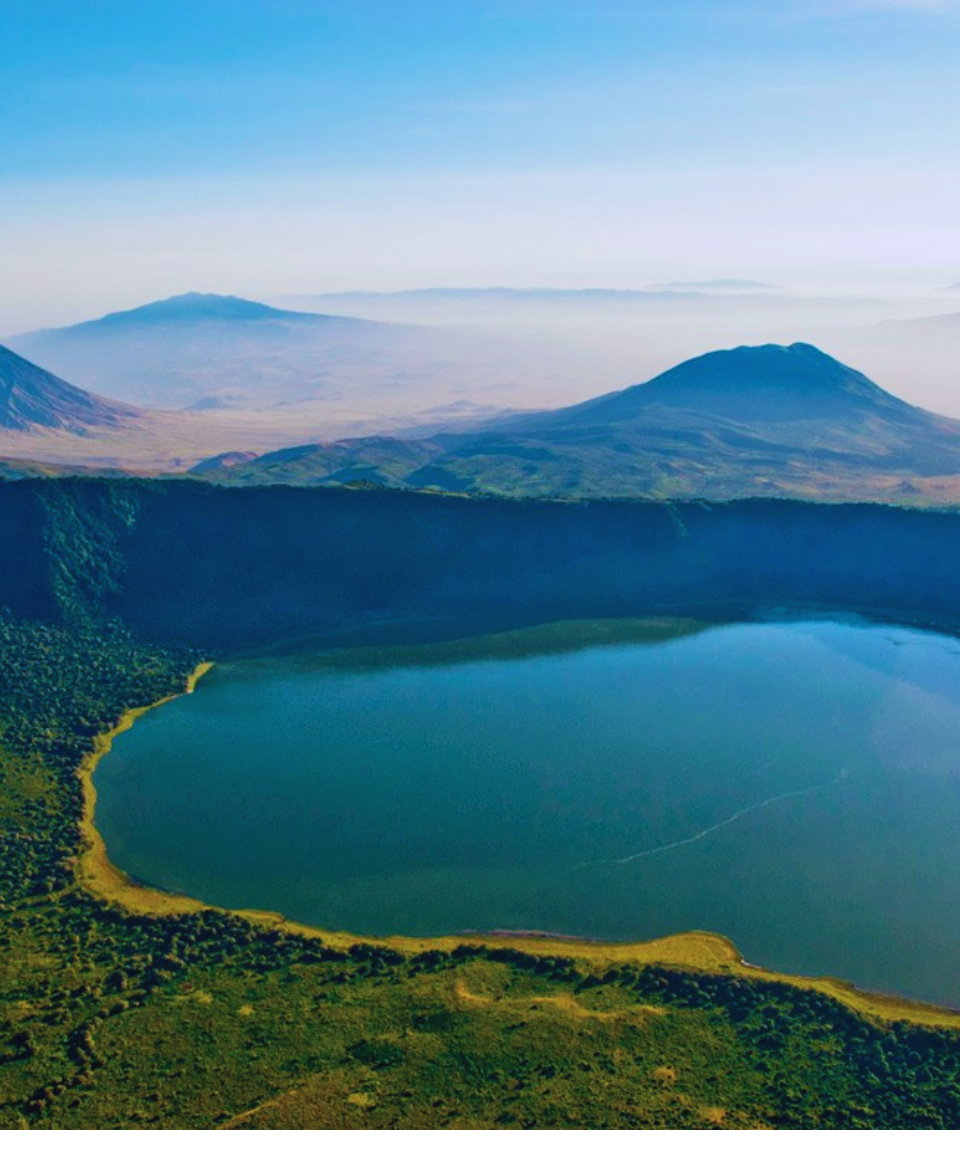

The Crater Experience: Witness the largest intact volcanic caldera in the world, spanning 260 square kilometers. The lush basin is a sanctuary for thousands of animals, including the iconic "Big Five"—lion, leopard, rhinoceros, elephant, and buffalo.
Wildlife Spectacle: Ngorongoro is a wildlife photographer's dream. From the pink-hued flocks of flamingos on Lake Magadi to grazing zebras, wildebeests, and rare black rhinos, this ecosystem is teeming with life.
Cultural Immersion: Meet the Maasai community and learn about their traditions, which harmonize with nature's rhythms. A visit to Maasai villages adds a unique human connection to the journey.
Species

The Iconic Big Five: Ngorongoro provides a rare opportunity to see Africa’s majestic Big Five (lion, leopard, rhino, elephant, and buffalo) all within a day. The crater’s abundant vegetation and year-round water supply ensure animals are always close by.
Birdwatcher's Paradise: The shimmering waters of Lake Magadi, located within the crater, attract flocks of flamingos, pelicans, and hundreds of other bird species. For ornithologists and nature enthusiasts alike, it’s a spectacle to behold.
A Human Connection: Ngorongoro isn’t just about wildlife—it’s also home to the Maasai community. The Maasai people have coexisted with this ecosystem for generations, practicing sustainable grazing and preserving their rich traditions. Engage with their vibrant culture through guided village tours.
Rich Historical Legacy: The Olduvai Gorge, just a short drive away, is a treasure trove of prehistoric artifacts. Known as the "Cradle of Mankind," this site preserves some of the earliest evidence of human evolution. It’s a humbling reminder of our shared beginnings

Best Time to Visit: The dry season from June to October is ideal for wildlife viewing. However, the green season from November to February transforms the area into a lush paradise perfect for birdwatching and photography.
What to Pack: Bring comfortable walking shoes, layered clothing for the cool mornings and warm afternoons, binoculars for close-up wildlife spotting, and plenty of sunscreen.
Safari Tips: Hire knowledgeable guides who can enrich your safari with insights into the region's flora and fauna. Make sure your itinerary includes a picnic inside the crater for a truly magical experience.
Ngorongoro offers accommodations to suit every taste and budget:
Luxury Lodges: Stay at properties like Ngorongoro Crater Lodge for a blend of opulence and jaw-dropping views.
Tented Camps: Opt for intimate eco-camps such as Lemala Ngorongoro Camp for a closer connection to nature.
Mid-Range Options: Enjoy comfort and affordability at lodges like Rhino Lodge, which is conveniently located near the crater rim.
No matter where you stay, waking up to the sounds of nature and sipping morning coffee with a backdrop of the crater is an experience that will stay with you forever.
Ngorongoro is easily accessible from Tanzania’s tourism hub, Arusha. Most travelers arrive by road—a scenic three-hour drive through the rolling hills of the Great Rift Valley. Alternatively, you can fly to the nearby Manyara Airstrip and continue by road. To make the most of your visit, consider combining Ngorongoro with nearby Serengeti National Park or Tarangire National Park for a comprehensive Tanzanian safari experience.

As you embark on your Ngorongoro adventure, remember that conservation is at the heart of this area. The delicate balance of wildlife, environment, and local communities depends on responsible tourism. Stick to designated trails, avoid single-use plastics, and respect local customs. Your actions contribute to preserving this extraordinary destination for generations to come.